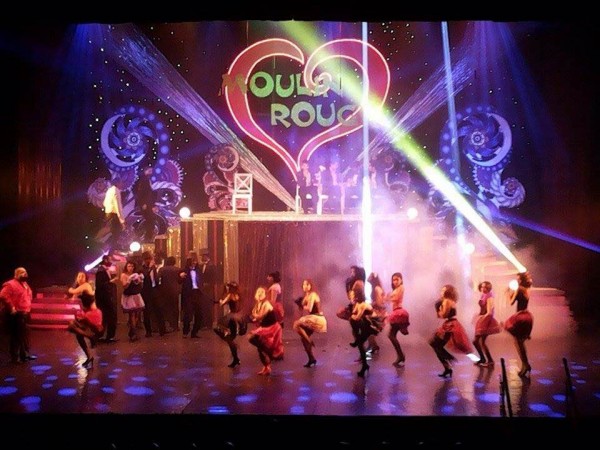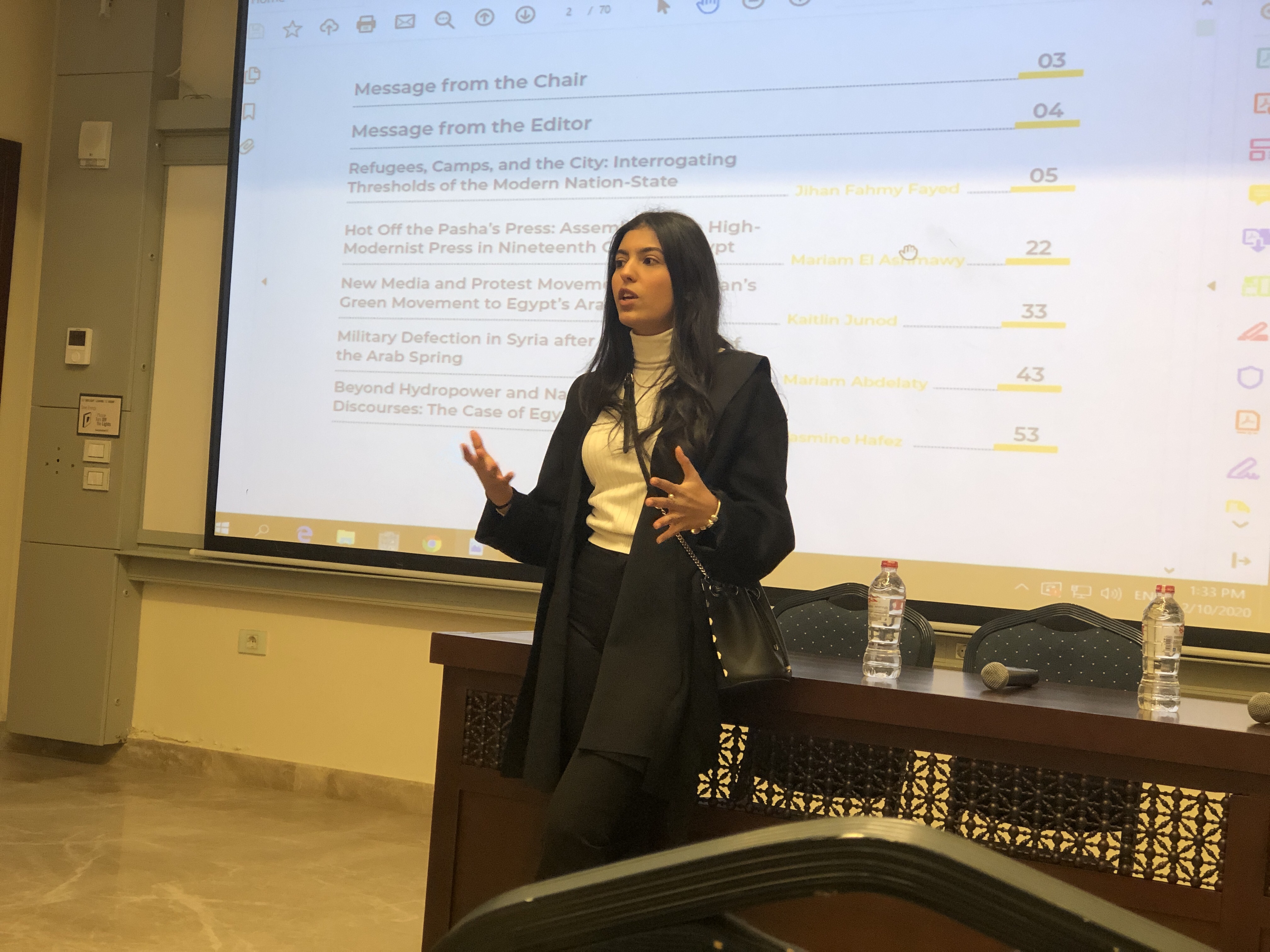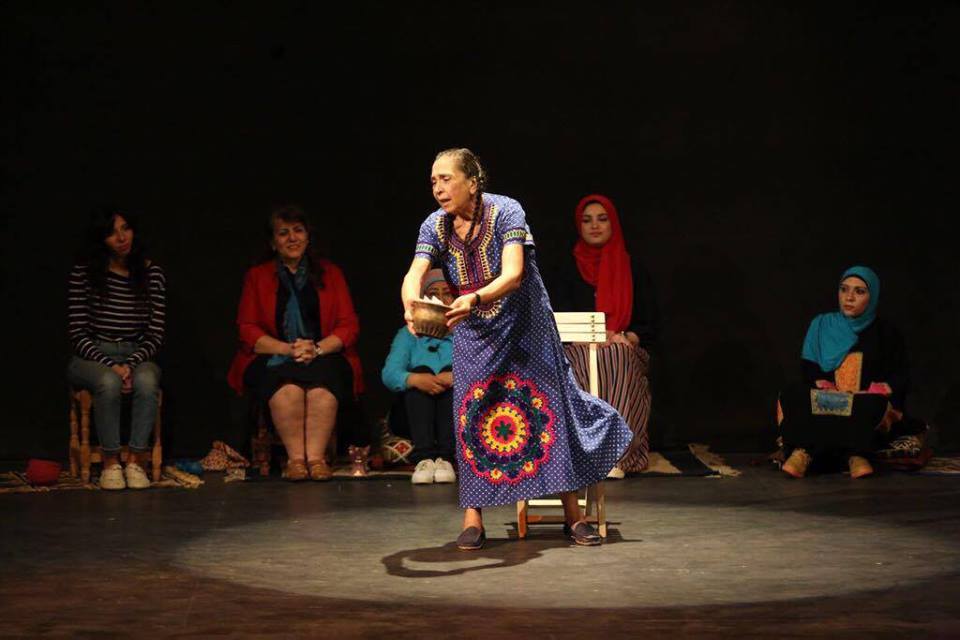El-Ghaba brings ‘Spectacular’ Moulin Rouge to Cairo
BY NADINE EL GUIDDAWY @na_elguiddawy
AND AMINA ZAINELDINE @A_Zaineldine
![[Zaineldine]](http://www.auccaravan.com/wp-content/uploads/2015/09/IMG_8746-e1441977179284.jpg)
“So exciting. The audience will stomp and cheer. So delighting. It will run for fifty years.”
In an evening of song and dance, Director Rawan El-Ghaba brought the world-famous musical Moulin Rouge! to the main stage of the Cairo Opera House last week in what is the first Egyptian Broadway-style production of Baz Luhrmann’s flashy, entertaining, yet tragic love story.
The musical centers around Scottish playwright Christian who has traveled to Paris to put together a stage production that encapsulates late 19th Century bohemian ideas of freedom, beauty, truth and love.
While working on the play for the Moulin Rouge cabaret, he falls in love with Satine a beautiful, high-class courtesan with a dream to become an actress.
But her artistic future lies in the hands of a jealous duke who is determined to keep her all to himself.
Forced to keep their love a secret, Christian and Satine risk the future of the cabaret itself, unaware of the heroine’s terminal illness.
While the performance received enthusiastic applause from the audience, the actors appeared uneven at times.
Eduard Cousin often appeared detached from his character Christian. When Christian was in the throes of depression and angst, Cousin’s voice carried an indifferent neutrality that betrayed the significance of these raw emotions.
Mai Mohamed El-Ghaba brought a certain charm to Satine but at times her acting was melodramatic and stretched, as if to compensate for Cousin’s lack of sufficient emotion.
But the star of the show was Magdy Al-Beheiry as Harold Zidler, the proprietor of Moulin Rouge. His confident demeanor and audacious humor were memorable and provided the right amount of comic relief at the right moments.
The diverse and multinational audience wasn’t completely spellbound until the performance of “Lady Marmalade”, a risque dance number by Zidler’s girls nicknamed the ‘diamond dogs’.
Though it may have been the best choreography in terms of execution in the show, there were times when the dancers were not quite synchronized with each other.
And this begins to hint where the production falls short.
The music and choreography are unsurprisingly the most important elements in a musical – but El-Ghaba’s efforts here are a tad lacking.
There was no live orchestra; all of the songs were pre-recorded and blasted from speakers around the hall. This adversely affected the performance in many respects. For one, the transitions from dialogue to song were not smooth, as the songs often came in a second too late or too early.
Also, the volume of the songs was very high, while the actor’s voices were almost inaudible in speech because there was only one microphone hanging from the ceiling. This difference created an overall sense of unprofessional sound engineering.
Audience members who had seen Luhrmann’s film (starring Ewan McGregor, Nicole Kidman and Jim Broadbent) were rather surprised, as some of the tracks used in the performance were taken directly from the movie. Lip-syncing was expected, but hearing the “Roxanne” tango sung completely in the original Jacek Koman’s voice was not.
Naturally, some performers’ singing ability was stronger than others, but more often than not, there seemed to be little sensitivity for the nuances in delivery. Parts of almost every song were sung stronger than needed, even the ones that were meant to be done more softly.
The show was visually colorful and lively and the glittering set was reminiscent of Luhrmann’s vibrant, psychedelic Moulin Rouge. In spite of this, some of the props were placed in a manner that obscured the actors from the audience.
Nonetheless, the cast continued to surprise the audience in wonderful, well-tailored costumes, the actors and actresses brought the show to life, making the audience laugh and cry.
With all of its faults and virtues, it cannot be denied that this bold, original performance directed by a young Egyptian woman is but the start of a bright future for Broadway-style shows in Egypt.




